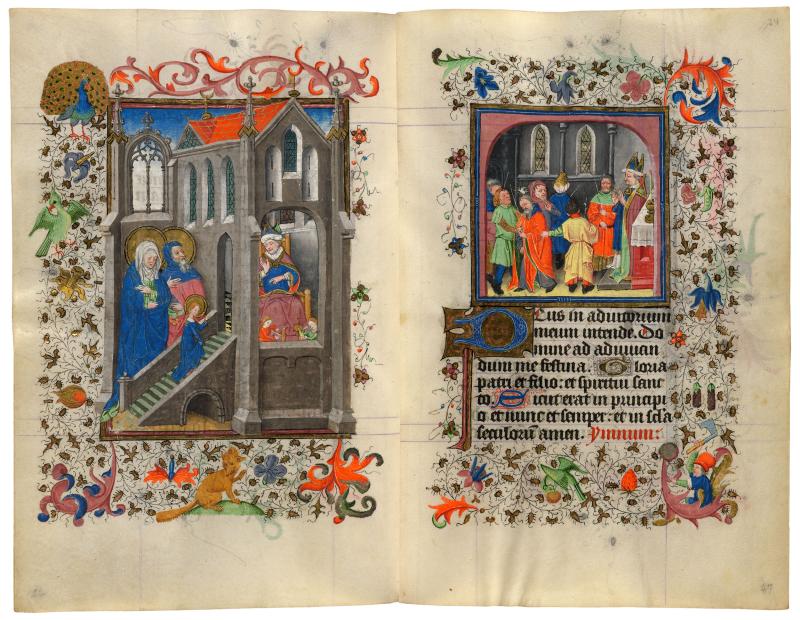
Presentation of the Virgin in the Temple
Joseph Designated as the Husband of the Virgin
Purchased on the Belle da Costa Greene Fund with the assistance of the Fellows and with special assistance of Mrs. Frederick B. Adams, Sr., Mrs. Robert Charles, Mr. Laurens M. Hamilton, The Heineman Foundation, Mrs. Donald F. Hyde, Mrs. Jacob M. Kaplan
The beginning of each of the eight Hours of the Virgin was originally marked, as here, with a juxtaposition of a full- and a half-page miniature. Such elaborate pictorial treatment of the individual Hours is one of the hallmarks of Catherine of Cleves's prayer book. On the left, the Virgin Mary ascends the steps of the temple, where she will join two maidens engaged in weaving and spinning. On the right, the elderly Joseph is designated as Mary's husband. The Virgin's suitors—with the exception of Joseph, above whose head floats the Dove of the Holy Spirit—are depicted with withered rods. A reluctant contestant, Joseph had tried to withdraw but was prevented by his fellow suitors.
